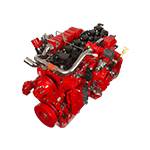dec . 02, 2024 01:36 Back to list
how to change brake drums to discs
How to Change Brake Drums to Discs
Upgrading your vehicle's braking system from drums to discs can significantly improve stopping power, heat dissipation, and overall performance. Disc brakes offer better responsiveness, especially in high-performance or heavy-duty situations. Whether you're a DIY enthusiast or a seasoned mechanic, this project can be tackled with the right tools and knowledge. Here’s a step-by-step guide on how to change brake drums to discs.
Tools and Materials Needed
Before starting, ensure you have the following tools and materials
- Jack and jack stands - Lug wrench - Socket set - Brake cleaner - New disc brake kit (calipers, discs, pads, and hardware) - Brake fluid - Torque wrench - Bungee cord or rope (to hang calipers) - Screwdriver - C-clamp (for compressing caliper pistons)
Step 1 Safety First
Begin by ensuring your vehicle is on a level surface. Use the jack to lift the car and secure it with jack stands. Remove the wheel using the lug wrench, exposing the brake assembly.
Step 2 Remove the Brake Drum
Start by removing the brake drum. Depending on your vehicle, there may be retaining screws or clips holding the drum in place. If the drum is stuck, gently tap it with a hammer or use a rubber mallet to loosen it. Once free, slide the drum off and set it aside.
Step 3 Remove Associated Components
With the drum removed, take out the brake shoes, springs, and other associated components. This may require the use of a screwdriver or pliers to detach springs and clips. Ensure all parts are accounted for, as some may be reused with your new disc brake setup.
Step 4 Install the New Brake Rotors
how to change brake drums to discs

Once the drum assembly is removed, you can start installing the new disc brake system. Begin by attaching the new rotors to the wheel hub. Ensure that they fit securely and align with the hub's bolt pattern. If necessary, use a little brake cleaner to clean the rotor surface before installation.
Step 5 Install Calipers and Brake Pads
Next, attach the calipers to the brackets that hold them over the rotors. Ensure that the calipers are compatible with the rotors you’ve installed. Once the calipers are in place, insert the new brake pads into the calipers. Make sure they are positioned correctly, with the friction material facing the rotor.
Step 6 Connect the Brake Lines
If your new disc brake system requires different brake lines, remove the old lines and install the new ones according to the manufacturer's instructions. Be sure to tighten all connections securely to prevent leaks.
Step 7 Bleed the Brakes
After everything is connected, it’s essential to bleed the brakes to remove any air from the lines. Start with the wheel farthest from the master cylinder and work your way closer. This usually involves a helper pressing the brake pedal while you open and close the bleeder valve on each caliper; then close it before the pedal is released.
Step 8 Test and Reassemble
Before putting your wheels back on, pump the brake pedal a few times to ensure the calipers are properly seated. Once you've confirmed the brake system is functioning well, reattach the wheels and lower the vehicle. Finally, perform a test drive to ensure that the new brakes are functioning correctly and check for any leaks.
Conclusion
Changing brake drums to discs can be a straightforward process with the right preparations and tools. This upgrade not only enhances safety and performance but can also add value to your vehicle. Make sure to follow all procedures carefully and consult your vehicle manufacturer's guidelines as needed. Happy braking!
-
High-Quality Brake Drum MAZ – Durable Drum Brake Drum & Brake Drum and Brake Shoe Solutions
NewsJul.05,2025
-
High-Quality Brake Drum Iveco - Durable Drum Brake Drum & Brake Shoe Solutions
NewsJul.05,2025
-
High-Quality Brake Drum MAZ – Durable Drum Brake Drum & Brake Drum and Brake Shoe Solutions
NewsJul.04,2025
-
Brake Drum Man - High-Quality Drum Brake Drums & Brake Shoes for Reliable Performance
NewsJun.24,2025
-
High-Quality Brake Drum Kamaz – Durable Drum Brake Drum & Brake Shoe Replacement
NewsJun.10,2025
-
High-Quality Brake Drum Liza for Drum Brake Systems - Superior Durability and Performance
NewsJun.10,2025
